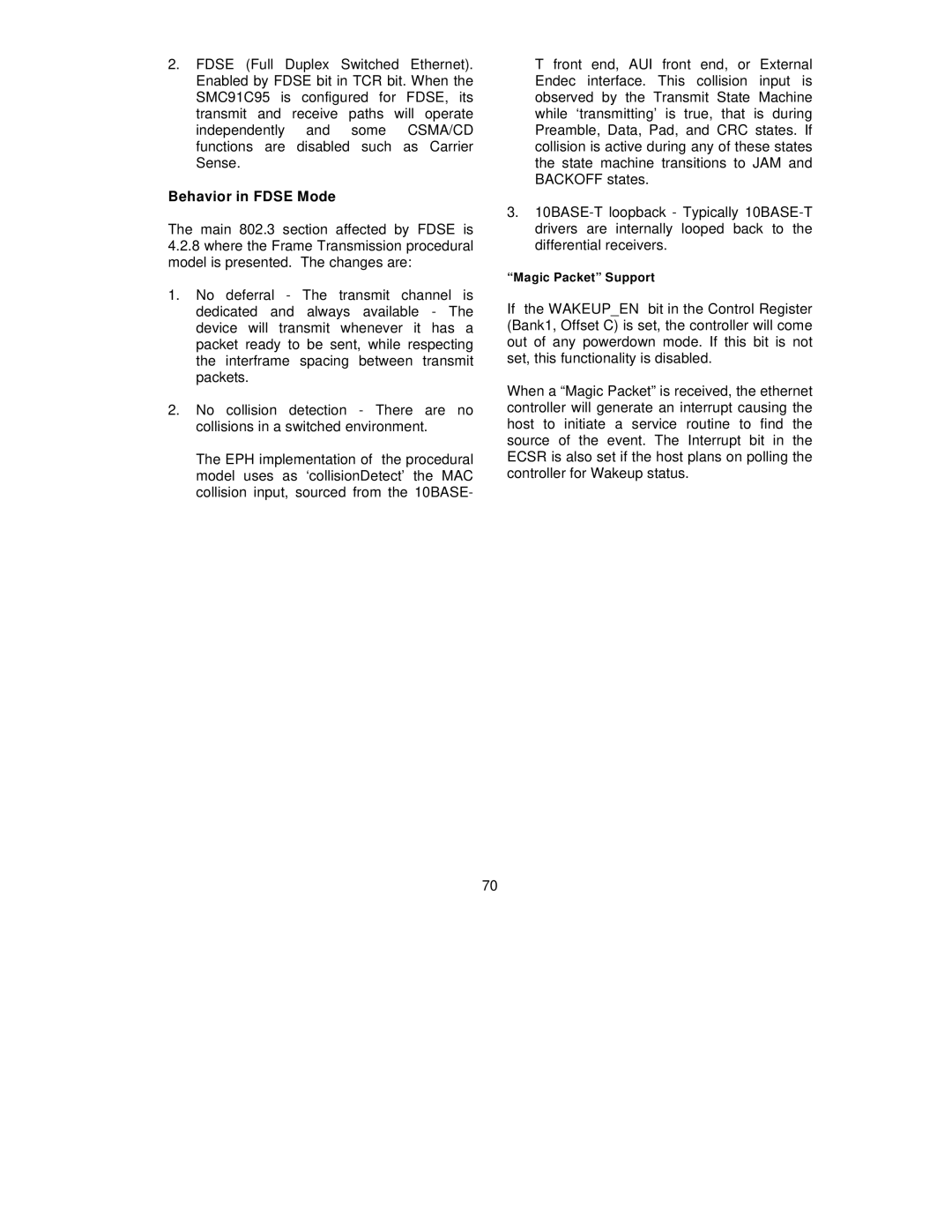2.FDSE (Full Duplex Switched Ethernet). Enabled by FDSE bit in TCR bit. When the SMC91C95 is configured for FDSE, its transmit and receive paths will operate independently and some CSMA/CD functions are disabled such as Carrier Sense.
Behavior in FDSE Mode
The main 802.3 section affected by FDSE is
4.2.8where the Frame Transmission procedural model is presented. The changes are:
T front end, AUI front end, or External Endec interface. This collision input is observed by the Transmit State Machine while ‘transmitting’ is true, that is during Preamble, Data, Pad, and CRC states. If collision is active during any of these states the state machine transitions to JAM and BACKOFF states.
3.
“Magic Packet” Support
1.No deferral - The transmit channel is dedicated and always available - The device will transmit whenever it has a packet ready to be sent, while respecting the interframe spacing between transmit packets.
2.No collision detection - There are no collisions in a switched environment.
The EPH implementation of the procedural model uses as ‘collisionDetect’ the MAC collision input, sourced from the 10BASE-
If the WAKEUP_EN bit in the Control Register (Bank1, Offset C) is set, the controller will come out of any powerdown mode. If this bit is not set, this functionality is disabled.
When a “Magic Packet” is received, the ethernet controller will generate an interrupt causing the host to initiate a service routine to find the source of the event. The Interrupt bit in the ECSR is also set if the host plans on polling the controller for Wakeup status.
70
